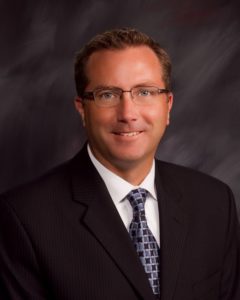 Four Steps and Millions in Savings
Four Steps and Millions in Savings
By Chris Fox, CEO, Avantas
Twitter: @Avantas
During two ninety-minute sessions at the 2014 American College of Healthcare Executives (ACHE) Congress on Healthcare Leadership, Jamie Parsons, VP of HR at Mountain States Health Alliance (MSHA) and I laid out four components of MSHA’s labor management strategy, which are relevant to all larger provider organizations.
- Workforce Planning: Right-sized core and contingency staffing sources to cost-effectively handle the ebb and flow of patient demand
- Proactive Resource Alignment: Accurate forecasts of volume utilized to create better schedules
- Centralized Resource Management: Increased effectiveness through standardized practices and improved resource coordination for deployment across an enterprise
- Continual Measurement of Outcomes: Leveraging a single, trusted source of data that drives continual improvement
The presentation walked attendees though these strategies, highlighting the approach and results at MSHA. Some of MSHA’s financial results shared at the session include:
- $3.2M savings within first year
- $12M annual savings in contract labor costs
- Reduction of hourly incentives by 65%
Jamie Parsons and I were fortunate to have an engaged group of attendees who were eager to ask questions and approach us following the presentation. This interaction was the most interesting takeaway for me. Jamie and I spoke to a number of executives from health systems across the country. These health leaders got it – they had tackled similar standardization and centralization projects around supply chain and revenue cycle. The strategies and methodology made perfect sense to them. They understood the value proposition of an enterprise approach to managing labor, to standardizing policies and processes, and leveraging technology to automate best practices. They didn’t ask questions about any of that; they simply wanted to know how to begin.
Specific questions they bounced off of Jamie and me included:
Q: What leaders are involved in an enterprise labor management initiative?
A: It’s a collaborative effort between HR, Finance, Nursing, Ancillary departments, and IT. Success on enterprise initiatives takes shared vision and open communication.
Q: How do we begin to prepare our organization for this change?
A: Related to the first answer, a cross functional steering committee should be formed. Shared vision needs to be achieved, and the ideal future state must be charted out. Meaning, what do you want the organization to look like/how will it function when you are done? Being able to clearly convey this is key at the start. You need to know what you want to build before you create a blueprint. And then you need to assess where you’re at against that desired future state and begin to identify the variances in current practices.
Q: How many resources do I need to implement the strategies and technology?
A: Less than you would think, considering how sweeping of a change it typically entails. As stated in the first two responses, leadership has to be involved from the start. They have to help chart the path to where they want to go. They need to be involved to give the initiative the sense of significance it warrants. More than anything, the bulk of the importance relates to gaining buy-in.
- How to manage the different feelings/levels staff are going to have to the change
- How to communicate all the changes enterprise wide and how to gain their buy-in
- How to set clear expectations and then how to hold staff accountable
Gaining the buy-in of managers and staff is crucial. They have to understand the initiate, why the organization is doing it, what their role is, and, most importantly, they have to know what’s in it for them. They need to know how their lives will improve as a result. For care staff these improvements are more stable staffing levels, less need to pick up extra shifts, fewer cancellations, and less floating, to name a few.
Other individuals we spoke with took a longer-term perspective. They understood that this would be a several-year process. They wanted to know how MSHA kept its focus.
The answer to that is simple, and complex. True cultural change takes time. It takes discipline and a lot of hard work. In all honestly, it can be a painful process at times. Change is tough on people. They have to believe in it and understand all the “whys” if the changes are going to stick and be successful. MSHA has done a wonderful job of keeping its focus, and in doing so, it has become second nature. When an initiative takes root and the changes implemented become repeatable processes supported by daily automation and measurements the benefits keep staff from slipping back into old habits.
About the author: Chris Fox is the CEO of Avantas and a healthcare industry veteran and recognized thought leader. His track record of driving the Avantas innovation team and providing guidance for software product development and game-changing strategic partnerships has played a crucial role in the company’s rapid rise to leadership in healthcare enterprise labor management.
